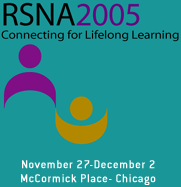Purpose/Objective: The purpose of our study was to assess the pathologic response rate and toxicity associated with neoadjuvant concomitant boost chemoradiotherapy using 5-FU or Capecitabine (Xeloda) in patients with locally advanced rectal cancer. We added an additional 20 patients to our initial report in an effort to validate earlier efforts. Materials/Methods: 44 patients ages 27-78 (median 56) were treated between December 1999 and February 2005. Thirty-six patients were male and 8 were female. All patients had biopsy proven adenocarcinoma of the rectum with cT2 (1), cT3 (26), cT4 (7) or Tx (10) tumors. Radiotherapy was delivered daily with 18MV photons per a 3 or 4 field prone belly board technique to displace small bowel. The mean dose to PTV-1, defined as the rectal GTV + regional lymph nodes, was 44 Gy (range 19.8-50.4Gy) delivered at 1.8-2.0Gy per fraction. The boost (PTV-2) was delivered as a second daily fraction given during the first 4 days and last 2-4 days of treatment with doses ranging from 1.0-1.5 Gy per fraction and included the rectal GTV + 1.5-2.0cm margins. The mean boost dose to PTV-2 was 8.6 Gy (range 4.4-12 Gy), for a cumulative PTV-1 mean dose of 52.5 Gy (range 24.2-56 Gy). All patients received concurrent chemotherapy consisting of 5FU (16), 5FU/Leucovorin (1), or Xeloda (27). Results: The median follow-up was 14 months (range 1-35). We had 31/44 patients complete therapy without unscheduled interruptions with a mean treatment time of 35 days (range 14-55 days). RTOG acute gastrointestinal Grade II or greater toxicity, primarily enteritis, occurred in 26/44 (59%) patients and Grade III toxicity of any type in 4/44 (9%). One Grade IV toxicity (metabolic acidosis) was seen and one Grade V toxicity occurred as a result of sepsis and hypovolemia. Grade II or greater skin toxicity was observed in 10/44 (23%) with only one (2%) of these being a Grade III toxicity consisting of an open perineal wound. Average time between chemoradiation and surgery was 55 days (range 31-153). In our study, 29/44 (66%) patients underwent curative surgery consisting of APR (17) or LAR (12). Surgery was aborted in an additional 2 cases: 1 for patient refusal of a necessary ileo-conduit for bladder invasion and a second for evidence of carcinomatosis at surgery. Two patients became medically inoperable, 7 pts had precluding medical co-mobidities, and 1 refused surgery. Only 1/29 (3%) experienced peri-operative morbidity with poor wound healing. An additional 6 patients are presently pending surgery as they undergo post chemoradiation evaluation. The average tumor distance from the anal verge in patients who received APR was 2.5 cm (range 0-6 cm) and 10.3 cm (range 4.5-19 cm) for those who received LAR. In the surgical patients, 9/29 had tumors >6cm from the anal verge. Our results demonstrated improvement in pathologic outcome in 12/29 patients (41%) with several patients achieving either a pathologic complete response (7 pts, 24%) or down staging (5 pts, 17%). Lastly, 21/29 (72%) were pNO, and 27/29 (93%) achieved negative margins. Conclusions: Neoadjuvant chemoradiation with concomitant boost appears to positively impact pathological outcomes in the treatment of rectal cancer. Further trials are indicated to examine the impact on local control and overall survival in this patient population.
Joyner, M,
Altered Fractionation Chemoradiotherapy in the Treatment of Locally Advanced Rectal Cancer: Experience of the San Antonio Cancer Institute. Radiological Society of North America 2005 Scientific Assembly and Annual Meeting, November 27 - December 2, 2005 ,Chicago IL.
http://archive.rsna.org/2005/4420777.html

